India and the World | GK Olympiad for Class 4 PDF Download
| Table of contents |

|
| What are Continents? |

|
| Countries & Capitals |

|
| Currencies |

|
| Famous Monuments in Different Countries: |

|
| Different flags of different countries |

|
| Different Religions |

|
What are Continents?
The Earth's landmass is divided into seven continents: Asia, Africa, North America, South America, Antarctica, Europe, and Australia. These continents are further divided into countries, each with its own government and borders, contributing to the world's geographical and cultural diversity.
Countries & Capitals
United States of America (USA)
- Capital: Washington D.C.
- Famous for: Statue of Liberty, Hollywood, White House

United Kingdom (UK)
- Capital: London
- Famous for: Big Ben, Buckingham Palace, Red Double-decker Buses
Canada
- Capital: Ottawa
- Famous for: Niagara Falls, Maple Syrup, Ice Hockey

Australia
- Capital: Canberra
- Famous for: Sydney Opera House, Great Barrier Reef, Kangaroos

India
- Capital: New Delhi
- Famous for: Taj Mahal, Bollywood, Spicy Cuisine
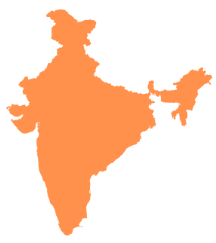
China
- Capital: Beijing
- Famous for: Great Wall of China, Terracotta Army, Pandas

Brazil
- Capital: Brasília
- Famous for: Amazon Rainforest, Rio Carnival, Football (Soccer)

Russia
- Capital: Moscow
- Famous for: Red Square, Kremlin, Trans-Siberian Railway
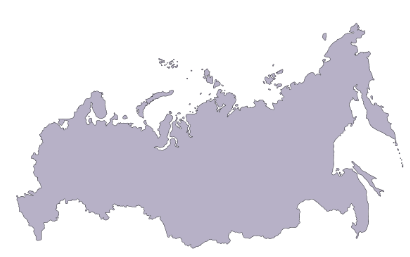
France
- Capital: Paris
- Famous for: Eiffel Tower, Louvre Museum, Fashion

Germany
- Capital: Berlin
- Famous for: Berlin Wall, Oktoberfest, Mercedes-Benz

Japan
- Capital: Tokyo
- Famous for: Mt. Fuji, Samurai, Sushi

South Africa
- Capital: Pretoria (Administrative), Bloemfontein (Judicial), Cape Town (Legislative)
- Famous for: Kruger National Park, Nelson Mandela, Wildlife
Mexico
- Capital: Mexico City
- Famous for: Mayan Ruins, Tacos, Mariachi Music
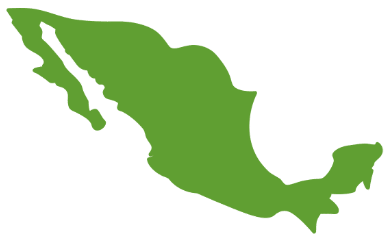
Egypt
- Capital: Cairo
- Famous for: Pyramids of Giza, Nile River, Pharaohs

Italy
- Capital: Rome
- Famous for: Colosseum, Pizza, Renaissance Art

These are some of the countries and their capitals along with what they are famous for. Learning about different countries can be exciting and opens up a world of knowledge and culture!
Currencies
Currencies are the types of money used in different countries. Each country has its own currency, which is used to buy goods and services within that country.
Popular Currencies
United States Dollar (USD):
- Symbol: $
- Used in: United States of America (USA)
 Notes: The USD is one of the most widely used currencies in the world for trade and finance.
Notes: The USD is one of the most widely used currencies in the world for trade and finance.
Euro (EUR):
- Symbol: €
- Used in: European Union (EU) countries like Germany, France, Italy, Spain, etc.
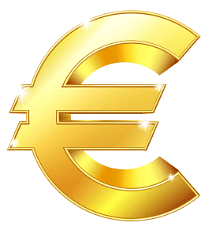
- Notes: The Euro is used by many countries in Europe, making it a common currency for travelers.
British Pound Sterling (GBP):
- Symbol: £
- Used in: United Kingdom (UK) including England, Scotland, Wales, and Northern Ireland
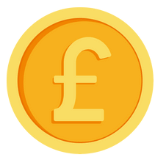
- Notes: The GBP is often referred to as the Pound and is used in the UK for buying goods and services.
Japanese Yen (JPY):
- Symbol: ¥
- Used in: Japan

- Notes: The Yen is the currency of Japan and is known for its colorful banknotes.
Chinese Yuan Renminbi (CNY):
- Symbol: ¥
- Used in: China
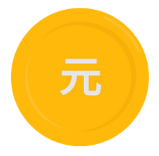
- Notes: The Yuan is the official currency of China and is used widely in the country.
Indian Rupee (INR):
- Symbol: ₹
- Used in: India

- Notes: The Rupee is used in India and comes in various denominations like coins and notes.
Australian Dollar (AUD):
- Symbol: $
- Used in: Australia

- Notes: The AUD is the currency used in Australia and is often used in trade with neighboring countries.
Canadian Dollar (CAD):
- Symbol: $
- Used in: Canada

- Notes: The CAD is the currency used in Canada and is similar to the USD in value.
Swiss Franc (CHF):
- Symbol: CHF
- Used in: Switzerland

- Notes: The Swiss Franc is used in Switzerland and is known for its stability.
South African Rand (ZAR):
- Symbol: R
- Used in: South Africa
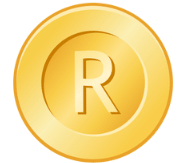
- Notes: The Rand is used in South Africa and is named after the Witwatersrand gold mines.
Famous Monuments in Different Countries:
Eiffel Tower, France

- Located in Paris, France.
- Built by Gustave Eiffel in 1889.
- Iconic symbol of France and a marvel of iron architecture.
- Offers panoramic views of Paris from its observation decks.
- A popular tourist attraction and a UNESCO World Heritage Site.
Taj Mahal, India

- Situated in Agra, India.
- Constructed by Emperor Shah Jahan in the 17th century.
- A magnificent white marble mausoleum.
- Built in memory of Mumtaz Mahal, Shah Jahan's wife.
- Known for its intricate marble work and symmetrical design.
Great Wall of China

- Found in China, stretching across northern China.
- Built over centuries by various dynasties.
- A massive fortification system with walls, watchtowers, and trenches.
- Originally built for defense against invasions.
- One of the most impressive architectural feats in history.
Pyramids of Giza, Egypt

- Located near Cairo, Egypt.
- Built by ancient Egyptians around 2500 BC.
- Includes the Great Pyramid of Giza, the largest of all.
- Built as tombs for pharaohs and royalty.
- Known for their precise construction and historical significance.
Statue of Liberty, United States
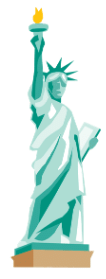
- Situated in New York Harbor, USA.
- Gifted by France to the United States in 1886.
- Symbolizes freedom and democracy.
- Designed by Frédéric Auguste Bartholdi.
- A popular landmark and a symbol of welcome to immigrants.
Colosseum, Italy

- Found in Rome, Italy.
- Built by the ancient Romans in the 1st century AD.
- A massive amphitheater used for gladiatorial contests and public spectacles.
- One of Rome's most iconic symbols and a UNESCO World Heritage Site.
- Known for its architectural innovation and historical importance.
Machu Picchu, Peru
- Located in the Andes Mountains, Peru.
- Built by the Inca Empire in the 15th century.
- A well-preserved ancient city on a mountain ridge.
- Believed to be a royal estate or sacred religious site.
- Known for its breathtaking scenery and archaeological significance.
Sydney Opera House, Australia
- Situated in Sydney, Australia.
- Designed by Danish architect Jørn Utzon.
- Completed in 1973 and opened by Queen Elizabeth II.
- A UNESCO World Heritage Site and an iconic symbol of Australia.
- Hosts various performing arts events and concerts.
Different flags of different countries
1. United States of America (USA)
- Colors: Red, white, and blue.
- Design: Thirteen horizontal stripes of red and white, representing the original Thirteen Colonies, and a blue rectangle in the canton with 50 white stars, symbolizing the 50 states of the union.
2. United Kingdom (UK)
- Colors: Red, white, and blue.
- Design: Union Jack, consisting of three overlaid crosses: the red St. George's cross for England, the white diagonal St. Andrew's cross for Scotland, and the red diagonal St. Patrick's cross for Ireland.
3. India
- Colors: Saffron, white, and green.
- Design: Horizontal tricolor of saffron (top), white (middle), and green (bottom) with a navy blue Ashoka Chakra (wheel) with 24 spokes in the center of the white band.
4. Brazil
- Colors: Green, yellow, blue, and white.
- Design: Green field with a yellow diamond and a blue globe with 27 white stars representing the states, and a banner across the globe with the national motto "Ordem e Progresso" (Order and Progress).
5. Japan
- Colors: White with a red circle.
- Design: White field with a red circular disc in the center, symbolizing the sun, known as the "Nisshōki" or "Hinomaru."
6. Canada
- Colors: Red and white.
- Design: Red field with a white square in the center featuring a red 11-pointed maple leaf, known as the "Maple Leaf Flag."
7. Australia
- Colors: Blue, red, and white.
- Design: Blue field with the Union Jack in the canton and a large seven-pointed star known as the Commonwealth Star or Star of Federation below the Union Jack, and five stars representing the Southern Cross constellation.
8. France
- Colors: Blue, white, and red.
- Design: Vertical tricolor of blue (hoist side), white, and red with the national emblem, the "Tricolore," symbolizing the values of the French Revolution.
9. Germany
- Colors: Black, red, and gold.
- Design: Horizontal tricolor of black (top), red (middle), and gold (bottom), known as the "Bundesflagge" or "Federal Flag."
10. China
- Colors: Red and yellow.
- Design: Red field with five golden-yellow stars in the canton, representing the unity of the Chinese people under the leadership of the Communist Party.
Different Religions
Hinduism (India)
- Overview: One of the oldest religions, emphasizing karma, dharma, and moksha.
- Beliefs: Multiple gods and goddesses, reincarnation, and the concept of Brahman (the ultimate reality).
- Sacred Texts: Vedas, Upanishads, Bhagavad Gita.
- Practices: Puja (worship), meditation, yoga, festivals like Diwali and Holi.
Buddhism (Originated in India, now practiced worldwide)
- Founder: Siddhartha Gautama (Buddha), who taught the Four Noble Truths and the Eightfold Path.
- Beliefs: Rebirth, enlightenment (Nirvana), the importance of compassion and mindfulness.
- Sacred Texts: Tripitaka (Pali Canon), Mahayana Sutras.
- Practices: Meditation, mindfulness, following ethical principles, Vesak (Buddha's birthday) celebrations.
Christianity (Originated in Israel, now practiced worldwide)
- Founder: Jesus Christ, believed to be the Son of God.
- Beliefs: Trinity (Father, Son, Holy Spirit), salvation through faith in Jesus, love and forgiveness.
- Sacred Texts: Bible (Old Testament and New Testament).
- Practices: Worship services, sacraments (baptism, communion), prayer, Christmas and Easter celebrations.
Islam (Originated in Saudi Arabia, now practiced worldwide)
- Founder: Prophet Muhammad, who received revelations from Allah (God).
- Beliefs: Monotheism, Five Pillars of Islam (declaration of faith, prayer, fasting, charity, pilgrimage to Mecca).
- Sacred Texts: Quran (recitation of Allah's words), Hadith (teachings and actions of Muhammad).
- Practices: Daily prayers (Salah), Ramadan fasting, Eid al-Fitr and Eid al-Adha celebrations.
Judaism (Israel and Jewish diaspora)
- Beliefs: Monotheism, covenant with God, importance of Torah (first five books of the Hebrew Bible).
- Practices: Sabbath observance, Jewish holidays (Passover, Yom Kippur, Hanukkah), synagogue worship, rituals like circumcision and bar/bat mitzvah.
Sikhism (Originated in India, mainly practiced in Punjab region)
- Founder: Guru Nanak Dev Ji, followed by nine other Sikh Gurus.
- Beliefs: Monotheism, equality of all humans, emphasis on selfless service (seva) and meditation.
- Sacred Texts: Guru Granth Sahib (spiritual scripture), teachings of the Gurus.
- Practices: Simran (meditative chanting), Langar (community kitchen), celebration of Guru Nanak Gurpurab and other Sikh festivals.
National symbols are iconic representations of a country's identity, culture, history, and values. These symbols often hold significant meaning and are used to promote national pride and unity among citizens. They can include emblems, anthems, flags, animals, plants, and landmarks.
Here are some examples of national symbols from different countries:
United States of America
- Flag: The Stars and Stripes, representing the 13 original colonies and states.
- Bald Eagle: National bird symbolizing strength and freedom.
- National Anthem: "The Star-Spangled Banner."
- Great Seal of the United States: Featuring the bald eagle and symbolic imagery.
United Kingdom
- Union Jack Flag: Combines the crosses of St. George (England), St. Andrew (Scotland), and St. Patrick (Ireland).
- Royal Coat of Arms: Features a lion and a unicorn representing England and Scotland.
- National Anthem: "God Save the Queen" (or "God Save the King" depending on the reigning monarch).
India
- Flag: Tricolor with saffron, white, and green, representing courage, peace, and fertility, with the Ashoka Chakra (wheel) in the center.
- National Emblem: The Lion Capital of Ashoka, with four lions standing back to back, symbolizing power, courage, and confidence.
- National Animal: Bengal Tiger, symbolizing strength and agility.
- National Bird: Indian Peacock, representing grace, beauty, and pride.
China
- Flag: Red with five stars, representing the Communist Party and the unity of the Chinese people.
- National Emblem: Tiananmen Gate (Gate of Heavenly Peace) with five stars above it, symbolizing the Communist Party and the people's unity.
- National Flower: Peony, symbolizing prosperity and honor.
- Giant Panda: National animal symbolizing peace and friendship.
Australia
- Flag: Blue background with the Union Jack, Southern Cross constellation, and the Commonwealth Star.
- National Coat of Arms: Kangaroo and Emu supporting a shield with symbols representing Australia's states.
- Golden Wattle: National floral emblem symbolizing unity and resilience.
- Advance Australia Fair: National anthem.
Japan
- Flag: White background with a red circle (the sun), symbolizing the rising sun and the Emperor.
- Cherry Blossom: National flower symbolizing renewal and the fleeting nature of life.
- National Anthem: "Kimigayo" (His Imperial Majesty's Reign).
These symbols often carry deep historical, cultural, and political significance, reflecting the values and aspirations of the respective countries.
|
17 videos|16 docs|43 tests
|















